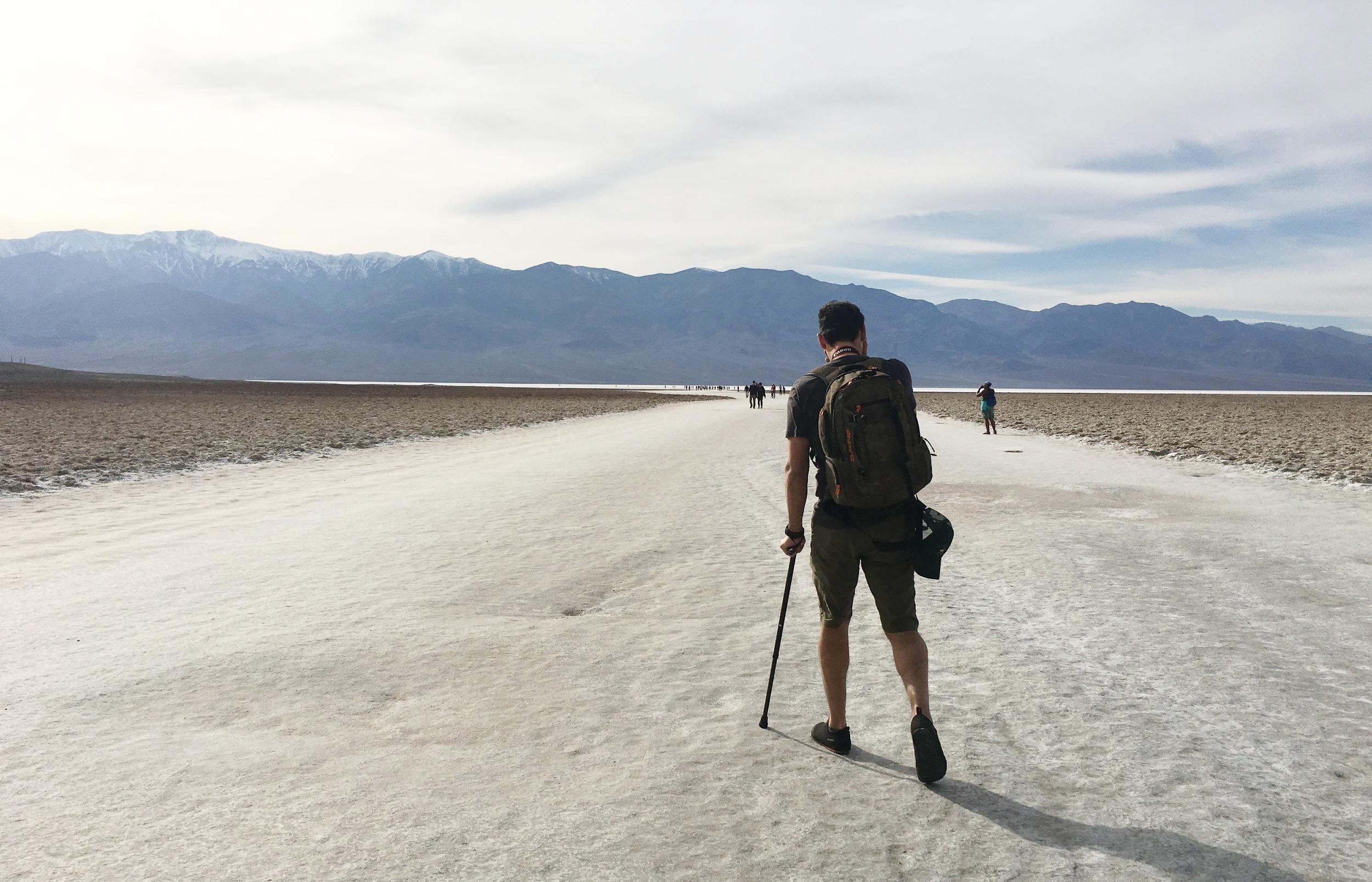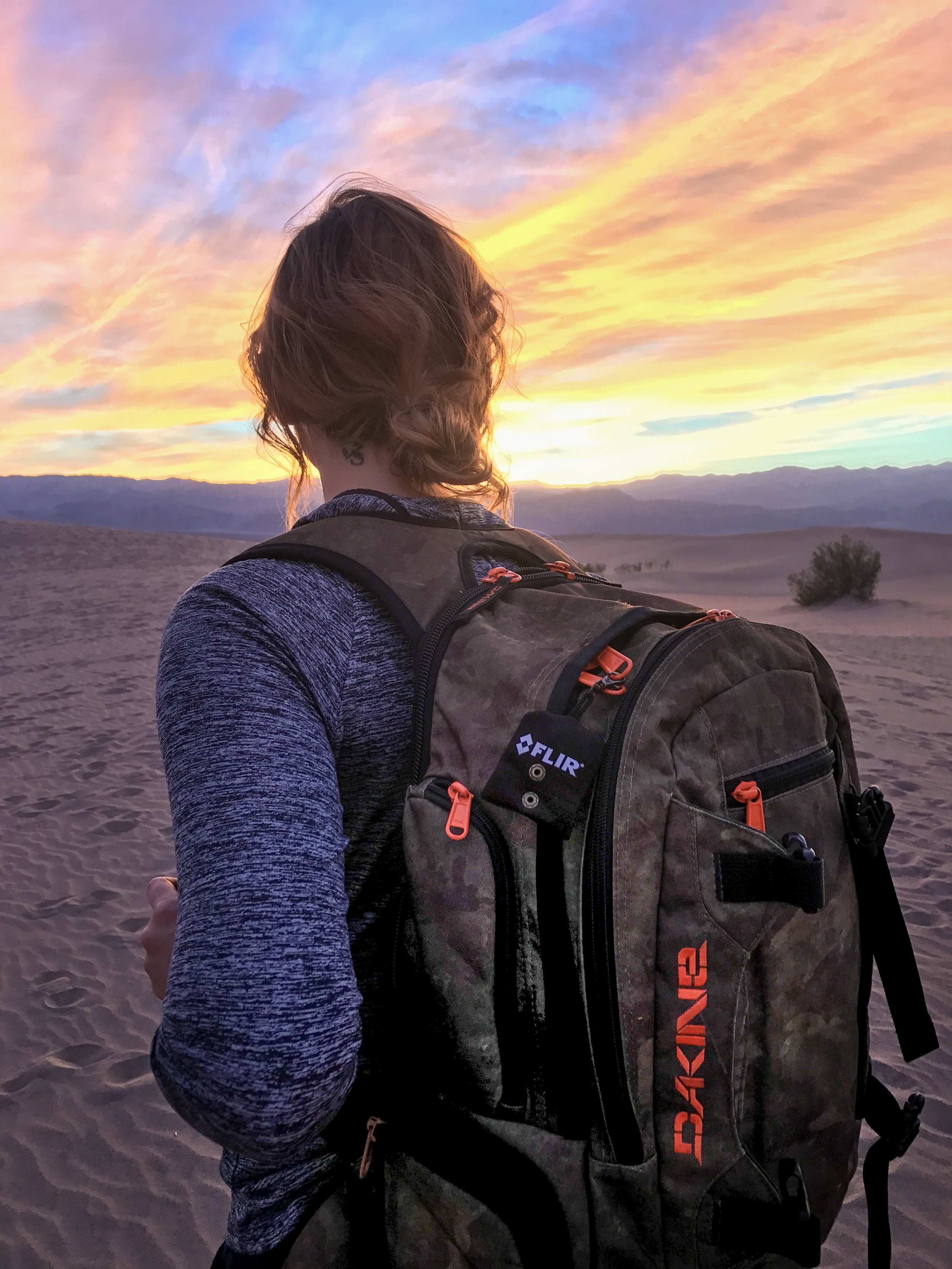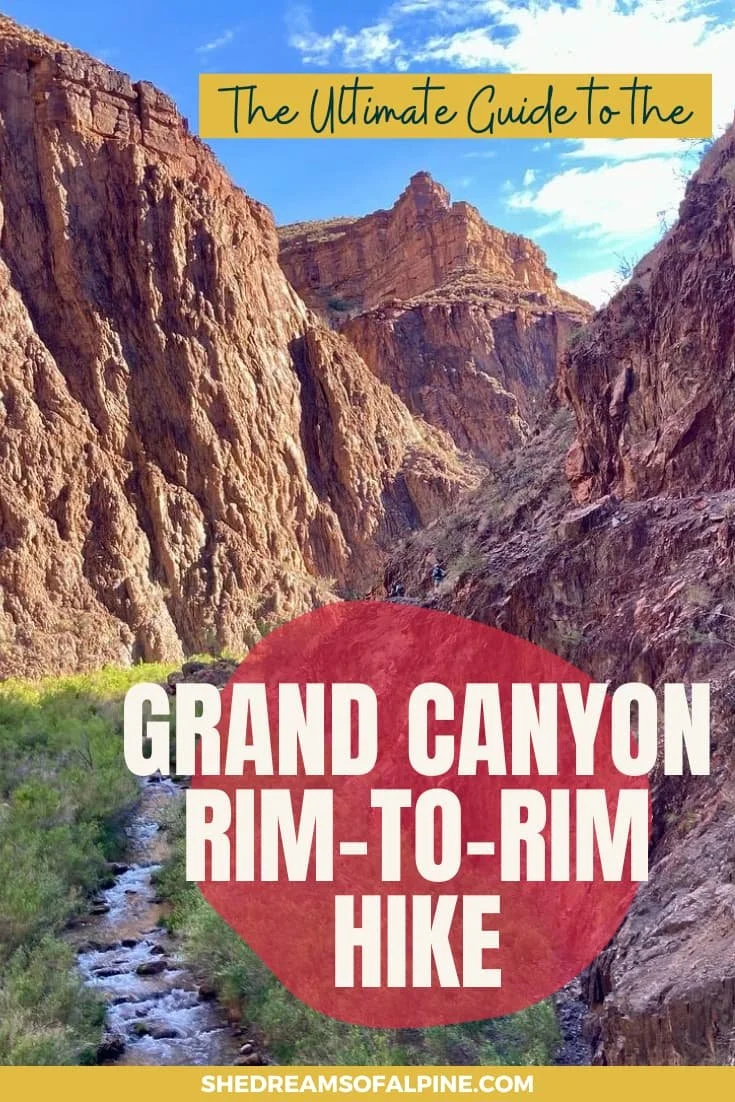A Weekend in Death Valley - Visit The Racetrack, Mesquite Flat Sand Dunes, and Badwater Basin
If you haven't been up to Death Valley National Park you should definitely put it on your list of places to visit. Particularly if you live relative close by. I lived in California for 4 years before I ever made a trip up there, and I really regret it! Even if you only have a weekend to spare (like we usually do), you can fit a ton of awesome things into your day. The winter season is the perfect time to take a trip up to Death Valley since the temperature is much cooler and bearable.
So if you are looking for some weekend ideas or if you find yourself close to Death Valley, let me suggest to you a few great places you can visit, even if you only have 2 days to spare.
Death valley national park - Quick info
Death Valley National Park is the largest national park outside of Alaska and is filled with a ton of diverse environments including sand dunes, salt flats, mountains, canyons and more. You could easily spend a ton of time exploring what the park has to offer, especially some of the lesser traveled hikes and off-road areas. The park is also know for great wildflower blooms in the spring time, something I've always wanted to go witness. Death Valley contains the lowest elevation in the United States, Badwater Basin at 282 feet below sea level, and it is also has the hottest recorded temperatures in the United States (the hottest temperature recorded to-date was 134F). Don't let that fool you though, it can also get very cold in Death Valley, the lowest temperature recorded was 15F. It has an interesting Native American and silver and gold mine history, however the only profitable commodity mined in the area was borax (a mineral that is used as a component in many of the items we use today).
Getting there
Death Valley National Park straddles the border of California and Nevada. If you are coming from the west of the park it is most easily accessed off of the highway 178 (otherwise known as Trona Road) or highway 190. Most likely you will end up taking the 190 into the park as this highway bisects the park from the west and east side. If you choose to enter the park from a different road, be sure to check that those roads are open, many of the alternative roads entering the park are 4-wheel drive roads and may require certain vehicle clearance, and sometimes those roads are closed (depending on conditions).
You can see below, depending on where you are coming from you could expect a 2-5 hour drive to the park. Unless you are further away (sorry San Fran), then you might want to plan a bit longer than a weekend to visit... unless you are just hardcore like that. There are some further instructions for directions on the National Park Service website, or click the map below for an estimate on Google Maps.
when to go
In my opinion, the best time to go is in the Winter. However, the Spring and Fall are also great options. Summertime in Death Valley can be very hot. Many people like to visit the park in the Springtime to see the wildflower blooms
camping & accommodations
Most of the campgrounds at Death Valley are a first-come first-serve basis with the exception of the Furnace Creek Campground, probably the most popular campground choice in the park, which is open all year and reservations are available from Oct to April. Check out our guide to California permit and reservation deadlines for more info about snagging a reservation at Furnace Creek.
Also, be aware that most of the campgrounds are closed in the summer. For more details on the different areas to camp, make sure to check the National Park Service website because they will also let you know if a campground is closed or not. You could also book a campsite (or lodging or RV site) with Panamint Springs which is located near the entrance on the West side of Death Valley.
We often end up planning our trips the week before we go somewhere, so there were no sites available for Furnace Creek when we decided to go. We ended up staying at Sunset Campground (which ended up having plenty of free spots) which is right across from Furnace Creek. It is primarily a big parking lot area for Vans and RV's, but has bathrooms too. We slept in the back of the Jeep. I think I saw a couple of people out there with tents though too.
There are also several great options for people who prefer not to camp, you can read more about them here.
GRAB MY [FREE] OUTDOOR BACKPACKER STARTER KIT:
I created the Ultimate Outdoor Backpacker Starter Kit for you (and it's FREE)! This starter kit is filled with 14 pages of my best hiking and backpacking tips to help you learn what it takes to become a safe, confident, and self-sufficient outdoor backpacker!
a two-day weekend itinerary in death valley
Below is a game plan for visiting some of Death Valley's highlights if you have a couple of days to spare. We drove up from the Central Valley in California to Death Valley very early Saturday morning. The car symbol below shows where we entered the park.
day 1 - visit badwater basin and explore the mesquite flat sand dunes
When we got to Death Valley we decided to make sure to grab a campground spot before we did anything else, so we drove to Sunset Camp to grab a spot and pay for it and then continued on our day. After securing a campsite, our first stop of the day was to go and see the Badwater Basin.
I mentioned above that Death Valley National Park is home to the lowest elevation in the United States, well Badwater Basin is where you will find the low point at 282 feet below sea level amidst a giant salt field.
It's not much of a hike out to the low point, but we indulged none the less :) to say we've been there. I had an extra interest with this place because I have this weird fascination with ultrarunners, maybe one day I'll run an ultra. There is this ultramarathon called Badwater 135 and is considered one of the world's toughest ultramarathon races. Runners start here in Badwater (in the summer mind you) and run 135 miles to Whitney portal which is at an elevation of 8,300 feet. The race has a total of 14,600 feet of elevation gain! Its crazy and those people are badass. That race is a big reason I wanted to see Badwater Basin for my self.
Across from the main parking lot area you can see a sign (which i circled in red) that signifies Sea Level.
The drives between the different attractions can take a bit of time, so plan your day accordingly. We had a late lunch after Badwater and then wanted to go see the Mesquite Flat Sand Dunes that we had passed earlier in the day when we entered the park. These are Death Valley's most accessible Sand Dunes. Eureka Sand Dunes are supposedly the tallest, but can only be accessed by 4WD vehicles, and we only had limited time that weekend.
The Mesquite Flat Sand dunes are sort of a "pick your own adventure" type of hiking attraction. You can go as short or as far as you'd like. Michael was still recovering from a knee surgery, so we took it fairly easy, but still went out far enough to feel like we were surrounded by the dunes.
We went to the dunes later in the day primarily because we wanted to catch the sunset from the Dunes and watch the show. I'm so glad we did! Make sure to bring a headlamp though so you can find your way back! We were derps and ended up having to use our cell phone flashlights...
We took the above sunset photos with our iPhones, can you believe that?! Technology.
day 2 - take a 4x4 adventure to see the racetrack
I had always seen these amazing pictures of The Racetrack where rocks leave tracks in the dried up desert bed and I had always wanted to go here and see it for myself! So on Sunday we decided to spend our day going out there. We knew it would take up most of our day since it was an off road trail and we would also be driving back home that evening.
It is highly stressed on their website that you make sure you have a higher clearance vehicle with good tires before making the drive out to this area because the roads are pretty rough. We found that mostly the roads weren't very high clearance, but small sharp rocks filled the road for about 20 miles.
From Sunset Campground we drove North along Scotty's Castle Road until we hit the Ubehebe Crater (easily found on the maps they give you when you enter the park). From there the 4 wheel drive road starts, and you'll travel (slowly) for 20 miles to Teakettle Junction (seen in the photo below). Continue straight for several miles until you reach an area called The Grandstand. This is where you will find The Racetrack playa. We made it there to the parking lot without any issues... but we weren't so lucky on our way out...
The Racetrack is a large dry lakebed (also know as a playa). Rocks have fallen into this lakebed from the nearby mountains and according to the National Park Service, have traveled up to 1,500 feet across the lakebed. They leave a record of their tracks across the dried lakebed floor.
For years it was a mystery as to how the rocks traveled by themselves across the lakebed, but on August 27,2014 a research witnessed first hand this phenomena. They discovered that in order for this phenomena to happen there has to be certain specific conditions. The National Parks Service website explains it best, "First, the playa fills with water, which must be deep enough to allow formation of floating ice during cold winter nights but shallow enough to expose the rocks. As nighttime temperatures plummet, the pond freezes to form sheets of 'windowpane' ice, which must be thin enough to move freely but thick enough to maintain strength. On sunny days, the ice begins to melt and break up into large floating panels, which light winds drive across the playa pool. The ice sheets shove rocks in front of them and the moving stones leave trails in the soft mud bed below the pool surface."
Amazing right?! There was pretty much nobody there the whole time we were out there, which was awesome. It was also freezing, so I'm wearing fleece pants, a beanie, and a down jacket... I'll admit, not the most "instagrammable" outfit I've ever picked ha! Whatever, I'm rocking it.
It ended up being super windy the day we went, but we were still able to get a few good photos and it was awesome to see this place in person!
If you have extra time, there are also some hiking trails in the nearby area such as the 6 mile (with 1,800 feet of elevation gain) old miner's trail to Ubehebe Peak. The trail is just west of the Grandstand Parking lot.
The photo below cracks me up. 1) Caught Michael on his stomach photographing the rocks... but 2) there is this really weird awesome circle cloud right above him!
We explored the whole playa, running around and having some fun. Taking some pictures and checking it all out. One thing to note though is please don't be a jerk and walk in the lakebed right after it's rained! It leaves horrible footprints in the area!
On our way back out, right as we passed the Tea Kettle Junction, we got a flat tire.
We are beginning to be pros at fixing flat tires. We had to fix one on our rental van when we were traveling in New Zealand a few months earlier as well. We were super bummed because the spare tire on Michael's jeep as super thin tread, and if that thing got a flat, we would be screwed. We were not very well prepared. We ended up running into some people who had rented Jeeps and they were super kind and gave us their can of "fix-a-flat" just in case we needed it on our way out! You can rent Jeeps inside of the Death Valley park if you don't have a 4x4 vehicle but want to do some off roading, they also offer tours if that's more your style.
We drove very, VERY slowly on the way back out after we changed the tire, and I'm happy to report we made it back home the rest of the way without a hitch. We've learned our lesson since then and now carry an extensive emergency car kit with us any time we travel outdoors. Oh, and we got some tired with thicker tread on the Jeep. I listed some of the key items to bring with you in your car below in the resources.
additional resources
Note: This post contains affiliate links.
Cell Service can be poor at Death Valley National Park, consider bringing a map with you, and guides can be nice, such as a hiking guide with a bit more detail.
National Geographic Trails Illustrated Maps are my favorite! They've got a ton of great detail, I bought one recently for our Tuolumne backpacking trip.
We also have quite a few Tom Harrison Maps, you can also typically find these in gas stations around the National Parks area too, which can be nice.
For the Photographer: Death Valley Photographers Guide
For the Hiker: A Falcon Guide to Hiking Death Valleys Greatest Trails
And just for fun, because I ran across this online when searching for the Death Valley maps, did you know there is a Dry Shampoo called Death Valley! Haha! How appropriate.
Also, if you missed it above, if you plan to go on one of the 4x4 trails in your own vehicle, be prepared for the worst! Learn from us :) Here's what we now carry in our car on all of our adventures for these worst case scenarios:
First, make sure to have a spare tire and tire jack and tire iron if you have the space in your car. Both of our cars have these already standard.
Fix-a-Flat - This stuff has literally saved our butts before when we got a flat on our way back from White Mountain. We always have one in our car now.
Always good to have some standard jumper cables as well. Get a pair with a smaller gauge number like 4 gauge or 6 gauge. These mean that the wire inside the cable is thicker, thus more reliable long term.
My dad also bought me jumper cable battery booster after one trip when I got done with a solo backpacking loop and came back to a car with no battery. I got lucky and was able to still find someone in the parking lot who could give me a jump. However, we now always bring this thing with us too because sometimes on back roads you never know how long it will take you until you run into someone, and this way you can boost your own battery back to life. I carry both this and standard jumper cables.
A jerry can could be nice if you can afford the room.. I'll admit though, we don't carry one of these, but we watch our gas tank very very closely on trips like these.
Lastly, Duct Tape ... seriously though, always good to carry.
This is by no means a comprehensive list of emergency supplies, I'll have to save that for another post, but this would be the bare minimum in my opinion (Besides water, food, and some way to stay warm, but we always have these items already on outdoor trips).
Anyways, I hope you get to make it out to Death Valley soon and possibly check out some of these places mentioned above, or create your own adventure. The options are endless.
Cheers,
Allison - She Dreams of Alpine
Did you enjoy this post about A Weekend in Death Valley? Please take a moment to share it on Pinterest or other social media!









































The 3 Lesser-Known Benefits of Prioritizing Outdoor Activities and Outdoor Adventure in Your Life | Let’s talk about the 3 lesser-known benefits of outdoor activities and outdoor adventure in your life! This post will help you better understand why making the time to get outside is so beneficial and essential to your self-care and personal growth – even if you’re a busy mom or have a lot on your plate with work or school. | shedreamsofalpine.com